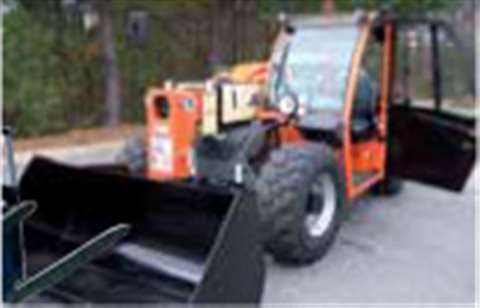Supercab
07 March 2008

This past December, trade reporters attended a JLG's Editor's Day at its ServicePlus location in Kennesaw, GA. One of the aims of the day was to introduce its new Super Compact Telehandler model, the G5-18A. The smallest within the company's range, the unit is testimony to the mounting demand for compact models.
“If you look at reports from the AEM, this is the fast-growing sector in telehandlers,” says Brian Boeckman, JLG product parent, telehandlers.
The new machine is the first of the company's compact models to be built at JLG's Shippensburg, PA facility in North America. The unit joins the two European-built G6-23A and G5-19A compact models. Although the G5-18A and G5-19A may share certain characteristics, the newer model has much smaller dimensions, such as a narrower width and weighs 3,000 pounds less than the 19A, which has a gross weight of 13,889 pounds. The G5-19A and G6-23A use a different engine with a 100 horsepower Duetz 2012 diesel. The G5-18A uses an 84 horsepower Perkins 1104D. A European version of the G5-18A, the 2505, will be available in February with the necessary European modifications. Additionally, a JLG-built Cat model TH255 will be introduced in February. The Cat machine will largely resemble the JLG unit, although will have modifications.
Its dimensions live up to its claim as a compact machine, appearing small and tight. It has a height of 75.6 inches, just over 6 feet. Its length is just a bit more than 12 feet and its width less than 6 feet. The machine was designed to maneuver in settings such as parking garages and multi-story construction. With a weight less than 11,000 pounds, the unit can be easily transported and lifted by crane at most job sites for use on higher-level floors.
One of its key features is the operator cab, designed with the end user in mind for strong comfort with armrest, tilted single joystick, adjustable seat, and even has a drink holder. “When sitting in this model, your arm just falls into place. You use your wrist more so than your forearm,” says Boeckman, explaining its ergonomic design for operator comfort.
Key features
Its “Lift/Loader mode, activated by a switch in the cab, allows operators to select boom in/out and the tilt attachment up and down through joystick controls. In the “Lift mode,” moving the joystick L/R will move the boom in and out. In “Loader mode,” moving the joystick tilts the attachment up and down.
“One of its big advantages is serviceability,” says Boeckman, as the unit has two engine access panels for access to filters, starter, and fill point in the front.
The machine comes standard with three operator-selectable steering modes including 4-wheel circle, 4-wheel crab and 2-wheel steering. The 126-inch turning radius allows easy maneuverability in tight work areas.
The machine can be ordered with a coupler that will accept universal skid steer attachments. If the machine is equipped with a JLG coupler mechanism, an adapter can be purchased which will allow the use of skid steer attachments.
The G5-18A can use most JLG attachments, including standard carriage, side-tilt carriage, general purpose bucket, light material bucket, grapple, crane hook and a universal skid steer adaptor. However, because of the machine's smaller dimensions, the company is not approving the use of its fork-mounted work platforms on the unit.
The handler is designed to be used in four main applications: construction, landscaping, municipalities, and agriculture. Boeckman says this size model is often retailed to the end user.
JLG focused on three key areas when designing the G5-18A: ergonomics and comfort of the cab, maneuverability and serviceability. “We spent a great deal of time talking with construction, landscape and municipal professionals to ensure the G5-18A super compact telehandler was designed for top of the line operator comfort,” says Boeckman. “We also paid close attention to the service needs by making the engine area easily accessible, with standard maintenance intervals of 250 hours, which is 100% longer than other compact telehandlers.”
The basic model will cost around $71,000.




